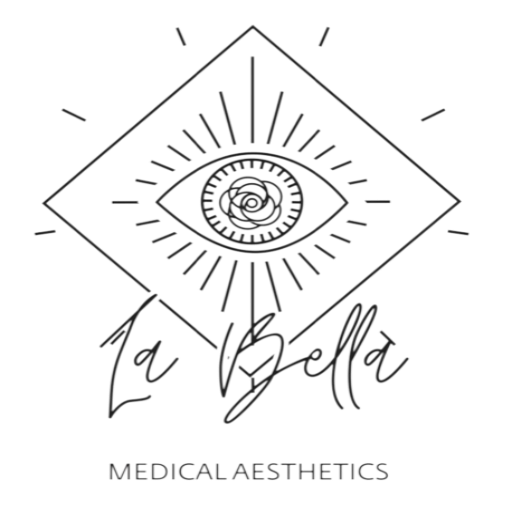Introduction
Dermaplaning is a popular skincare procedure that has gained significant attention in recent years. This non-invasive treatment promises to leave your skin looking and feeling smoother and more radiant. But is dermaplaning suitable for all skin types and conditions? In this blog, we will delve into dermaplaning, explore its benefits, and determine if it’s the right choice for everyone. We’ve written this blog for La Bella Medical Aesthetics, your trusted source for professional skincare solutions.
Understanding Dermaplaning
Dermaplaning is a skincare technique that uses a surgical scalpel to gently scrape away the top layer of dead skin cells, along with vellus hair, often called “peach fuzz.” This process is performed by trained professionals and is considered safe and effective. Dermaplaning is often used as a standalone treatment or combined with other skincare procedures.
The Benefits of Dermaplaning
- Exfoliation and Removal of Dead Skin Cells: One of the primary benefits of dermaplaning is exfoliation. The procedure effectively removes the layer of dead skin cells that can make your skin look dull and lifeless. By eliminating this outer layer, your skin appears smoother and more vibrant.
- Smoother Skin Texture: Dermaplaning helps to improve the texture of your skin by eliminating rough patches and uneven areas. After the procedure, you’ll notice that your skin feels softer and more even.
- Removal of Fine Facial Hair: Vellus hair can sometimes make makeup application less smooth and can trap dirt and oil, leading to breakouts. Dermaplaning removes this fine facial hair, leaving your skin makeup-ready and flawless.
- Enhanced Product Absorption: Without the barrier of dead skin cells, skincare products can penetrate your skin more effectively. This means your products, such as serums and moisturizers, can work their magic more efficiently.
- Improved Makeup Application: Smooth skin is the perfect canvas for makeup application. Dermaplaning ensures your makeup glides on flawlessly, producing a more professional and polished look.
- Potential for Reducing Fine Lines and Wrinkles: While dermaplaning is not primarily an anti-aging procedure, some people have reported a reduction in the appearance of fine lines and wrinkles. This effect is due to the exfoliation and the stimulation of collagen production.
Who is a Good Candidate for Dermaplaning?
Dermaplaning is generally suitable for most skin types, but there may be better choices for some. Ideal candidates include:
- Dry or Oily Skin: Dermaplaning is versatile and can benefit individuals with dry or oily skin. It helps in balancing oil production and improving the texture of dry skin.
- Mild Acne: If you have mild acne, dermaplaning may be suitable. It can help improve the appearance of acne-prone skin by reducing the buildup of dead skin cells and clogged pores.
- Uneven Skin Texture: Dermaplaning is excellent for those with uneven skin texture, as it smooths out rough areas and improves overall skin tone.
- Dull Skin: If your skin lacks radiance and looks dull, dermaplaning can provide a quick boost, leaving your skin with a healthy glow.
- Fine Lines and Wrinkles: While not a substitute for more intensive anti-aging treatments, dermaplaning can temporarily improve the appearance of fine lines and wrinkles.
It’s important to note that dermaplaning is unsuitable for individuals with active, severe acne, as it can exacerbate the condition. It’s always advisable to consult with a professional to determine if dermaplaning is right for your skin.
The Dermaplaning Process
Before scheduling a dermaplaning session, it’s essential to understand what to expect:
- The Procedure: A trained skincare professional performs dermaplaning. They will use a surgical scalpel to scrape the surface of your skin gently. The procedure is virtually painless and typically takes around 30 minutes.
- Preparing for the Procedure: Before your session, your skin will be thoroughly cleansed. It’s essential to arrive with clean, makeup-free skin to ensure the best results.
- Post-Dermaplaning Skincare and Aftercare: After the procedure, your skin may be slightly red and sensitive for a day or two. You’ll need to protect your skin from the sun and use gentle, hydrating skincare products to soothe any irritation.
Potential Risks and Side Effects
While dermaplaning is generally safe, there are some potential risks and side effects to consider:
- Skin Sensitivity: After dermaplaning, your skin may be more sensitive to sun exposure. It’s crucial to apply sunscreen and protect your skin from UV rays.
- Redness and Irritation: Some redness and mild irritation are common immediately after dermaplaning. These effects usually subside within a day or two.
- Infection: If the dermaplaning equipment or environment is not properly sanitized, there is a risk of infection. It’s crucial to choose a reputable provider like La Bella Medical Aesthetics to minimize this risk.
How to Choose a Qualified Provider
Selecting the right dermaplaning provider is essential for a safe and effective experience. Here are some considerations when choosing a practitioner:
- Credentials: Ensure the provider is a licensed and trained skin care professional or medical aesthetician.
- Reputation: Research the provider’s reputation by reading reviews and requesting recommendations from friends or online communities.
- Cleanliness and Hygiene: Verify that the clinic maintains a high level of cleanliness and hygiene to minimize the risk of infection.
- Consultation: A reputable provider will offer a consultation to assess your skin and discuss whether dermaplaning is right for you.
- Experience: Ask about the provider’s experience with dermaplaning. More experienced professionals are likely to deliver better results.
La Bella Medical Aesthetics: Your Trusted Skincare Partner
At La Bella Medical Aesthetics, we understand that your skin deserves the best care. Our team of skilled professionals is here to provide expert guidance and top-tier skincare services, including dermaplaning. If you’re considering dermaplaning or any other skincare procedure, we’re ready to help you achieve your goals.
Frequently Asked Questions
- How often should I get dermaplaning? The frequency of dermaplaning sessions can vary depending on your skin’s needs. Many people opt for monthly treatments to maintain their results.
- Is dermaplaning painful? Dermaplaning is a virtually painless procedure. Some individuals may experience mild discomfort or tingling during the process, but this typically subsides quickly.
- Can I wear makeup immediately after dermaplaning? It’s best to wait at least 24 hours before applying makeup to allow your skin to recover fully. Using clean brushes and makeup products is also crucial to prevent any potential infection.
- How long does a dermaplaning session take? A typical dermaplaning session takes about 30 minutes, making it a quick and convenient skincare treatment.
Conclusion
Dermaplaning is a versatile skincare procedure that can benefit a wide range of skin types and conditions. Whether you have dry skin, oily skin, uneven texture, or simply want to rejuvenate your complexion, dermaplaning can provide noticeable results. However, it’s important to choose a qualified provider like La Bella Medical Aesthetics to ensure a safe and effective experience.
If you’re interested in dermaplaning or other skincare services, don’t hesitate to contact us at La Bella Medical Aesthetics. We’re here to answer your questions, provide expert advice, and help you achieve the beautiful, healthy skin you deserve.
Ready to experience the benefits of dermaplaning or explore our range of skincare services? Contact La Bella Medical Aesthetics today to schedule your consultation and discover how we can help you achieve radiant, healthy skin. Your skin’s transformation begins here!






